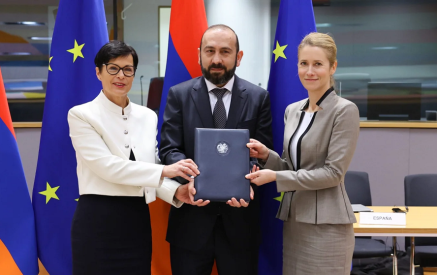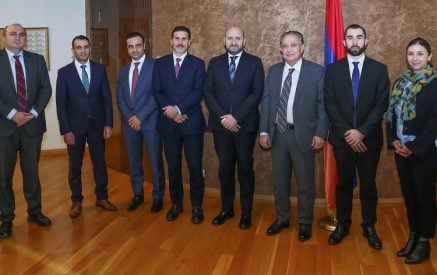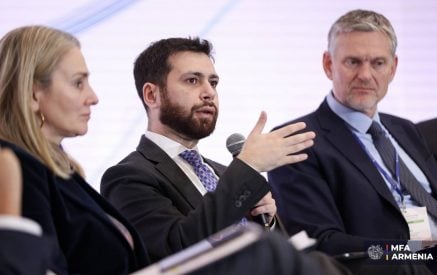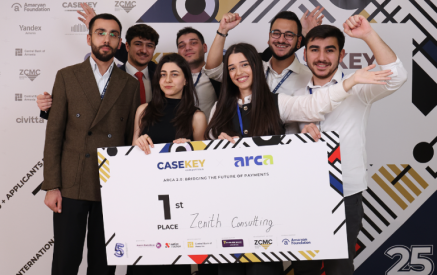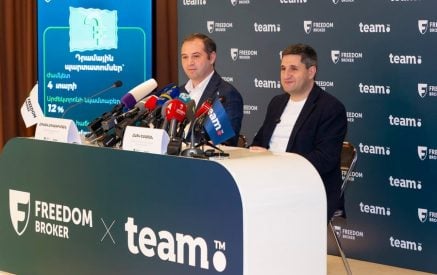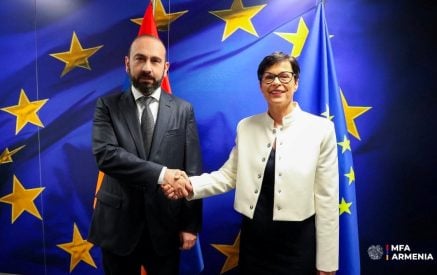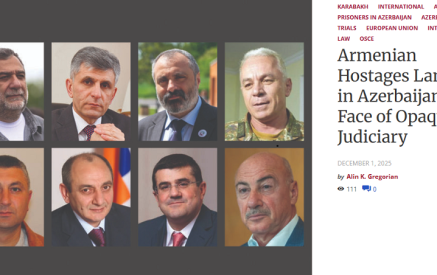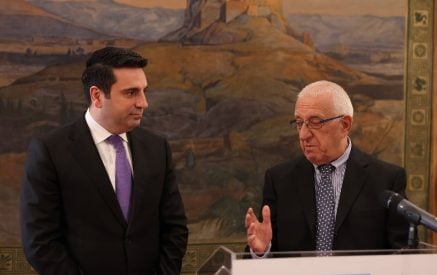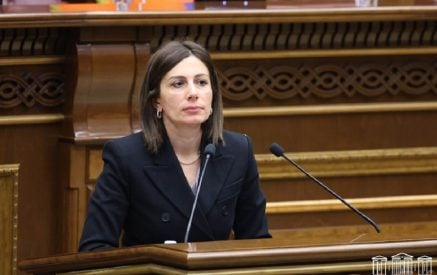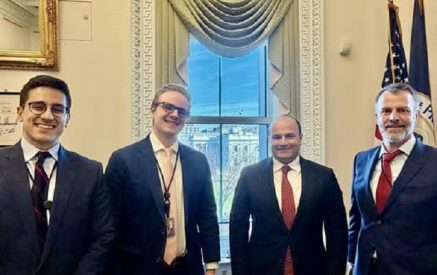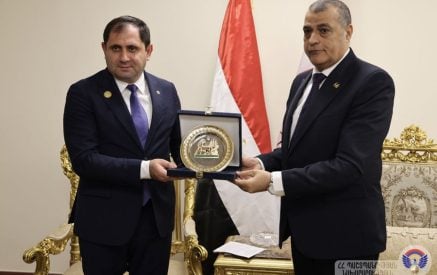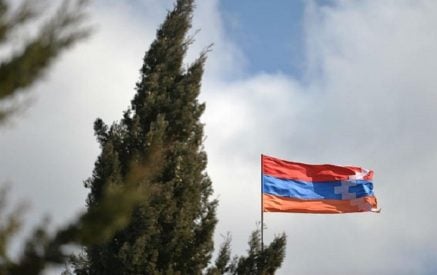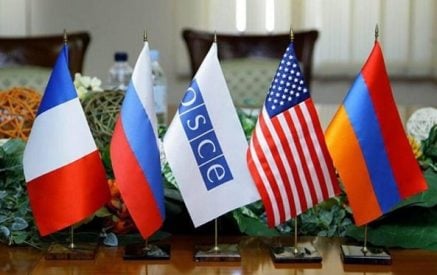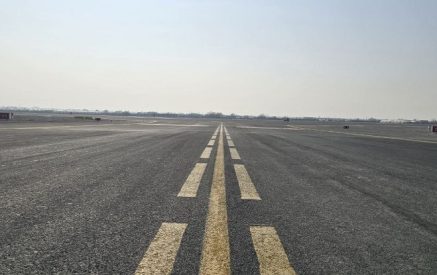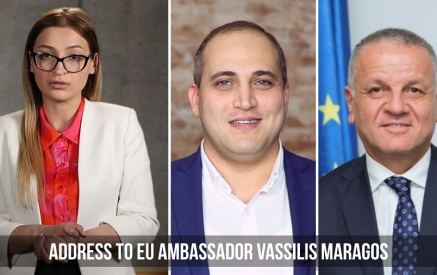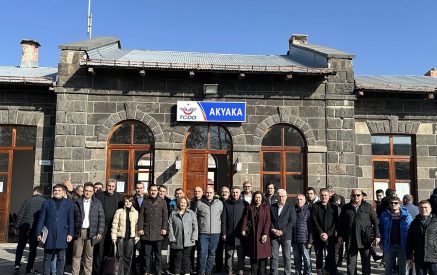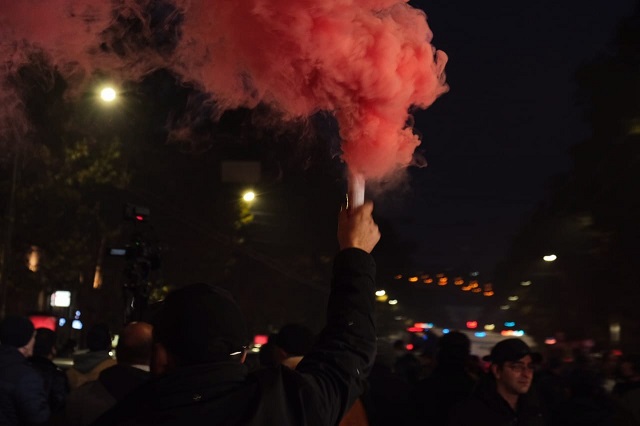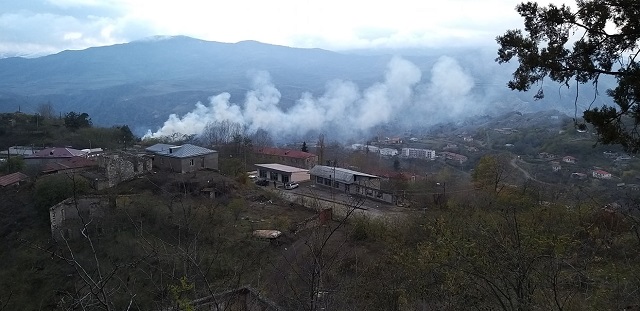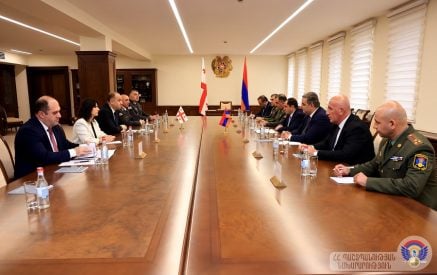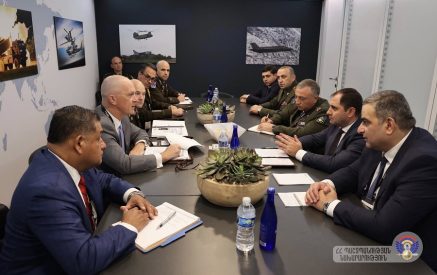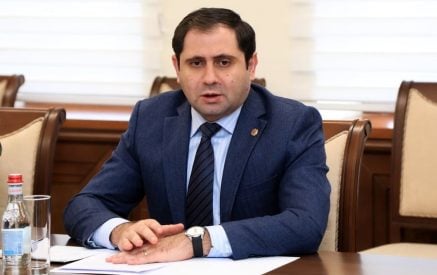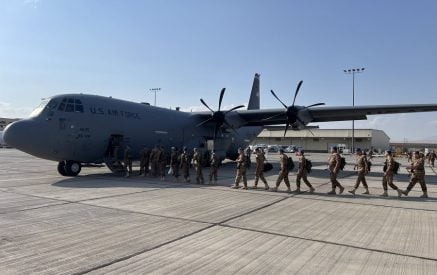The Armenian Weekly. As Armenia grapples with the fallout from the Artsakh War, several issues critical to ensuring security remain unresolved, including the demarcation of the borders of Armenia and Artsakh and the exchange of prisoners of war.
Significant problems have arisen in the past week due to the absence of definitively demarcated boundaries in the aftermath of the November 10 trilateral ceasefire agreement handing over a significant portion of the Artsakh region to Azerbaijan. Armenian residents of these surrendered territories, displaced by the dictates of the agreement, have been leaving their homes and departing for Armenia in time for the entry of Azerbaijani soldiers. Armenian servicemen left Karvachar by November 25 and Lachin by December 1, according to the timetable agreed on by the parties to the deal. However, the Armenian departure from Lachin, the final region handed over to Azerbaijan, has been marked by intense confusion as to the status of the towns and villages located along the Lachin Corridor.
“At the time of this writing, we do not know who is determining the borders and how demarcation is taking place. Demarcating the border is a serious issue and I wonder if the authorities in Armenia are approaching border drawing in Artsakh seriously and responsibly,” Dr. Ohannes Geukjian, chairperson of the department of Political Science and Public Administration at the American University of Beirut, told the Armenian Weekly. “The authorities in Armenia are either not transparent on all the details of the ceasefire agreement or unwilling to reveal the realities to further avoid political tension and civil unrest in Armenia.”
On November 26, residents in Berdzor started organizing trucks to head to Armenia after receiving word that they must evacuate by November 30. The following morning, they were instructed to stop the evacuation, only to be alerted once again on November 30 that they must leave the town. Hakob Tshagharyan, a former advisor to the Prime Minister, expressed the collective frustration of the town’s residents in a Facebook post addressed to the government. “Now what will happen with our Armenian compatriots? If today they were to be evacuated, why did you deceive them and keep them here until today?” he wrote. Even as Azerbaijani troops entered Lachin on December 2, residents of communities like that of Berdzor have not received official confirmation as to whether they should remain or depart.
Read also
The uncertain status and implementation of the Sotk gold mine is also embedded in the trilateral agreement. On the day that Armenian armed forces left Karvachar, a video of 80 Azerbaijani soldiers entering the mine was circulated online. The mine is located in the province of Gegharkunik and borders the territory that has now come under Azerbaijani control. The Armenian Ministry of Defense promptly decried any news that Azerbaijani soldiers had entered the mine and ordered employees to leave as false. Yet Hakob Avetyan, the mayor of the nearby Geghamasar community, confirmed the presence of Azerbaijani soldiers, stating that they entered Sotk and demanded that it be liberated and evacuated. During a press briefing that night, Deputy Chief of the General Staff of the Armenian Armed Forces Tiran Khachatryan stated that the newly demarcated border between Armenia and Azerbaijan runs through the Sotk gold mine. Negotiations are underway to determine the ultimate fate of the mine. The mine is run by GeoProMining Gold LLC, which is largely owned by Russian billionaire businessman Roman Trotsenko.
Meanwhile Armenian refugees displaced from Artsakh during the war have been returning to their homes. More than 26-thousand people have safely completed their return from Armenia.
Since the end of the war, family members of detained and missing soldiers have been demanding clearer answers from Armenian authorities on the status of their relatives. Russian peacekeeping forces and the International Committee of the Red Cross (ICRC) have been facilitating the exchange of prisoners of war and bodies of soldiers killed in combat as stipulated by the trilateral ceasefire agreement. Yet Armenian officials have been openly criticizing Azerbaijan for deliberately prolonging this exchange. On November 26, Armenia’s Human Rights Ombudsman Arman Tatoyan claimed that Azerbaijani authorities have been artificially protracting this process, refusing to cooperate with the two mediating bodies, with the goals of “creating an atmosphere of uncertainty and tension in the Armenian society” and disrupting the “mental immunity.” Armenia and Azerbaijan have since confirmed their commitment to exchanging prisoners of war on an “all for all” basis this week.
According to Dr. Geukjian, Azerbaijan might have an interest in protracting tension in the region. Regardless of the intentions of the Azerbaijani government, “as long as the Nagorno-Karabakh conflict is not solved fear and tension prevail and will recur between Armenians and Azerbaijanis,” he explained. “Establishing trust and building the peace between both communities is a long and tortuous journey. I am afraid to say peace building may not succeed.”
During a public discussion, Artsakh Human Rights Ombudsman Artak Beglaryan estimated that between 50 and 60 Armenian prisoners of war remain in Azerbaijani captivity, 30 of whom have been identified. He also said that among 30 missing civilians, an unspecified number of whom are assumed to be detained in Azerbaijan, 11 have been confirmed dead. During this same conversation, ICRC Armenia spokesperson Zara Amatuni denied reports circulating online that there are 150 Armenian prisoners of war in Azerbaijan. According to Artsakh President Arayik Harutyunyan, over 600 bodies have been removed from the conflict zone so far, and the process continues every day.
Armenian lawyers have been working hard to secure the safety of these prisoners of war, in light of evidence of their inhuman treatment by Azerbaijani soldiers. The European Court of Human Rights accepted a fifth application regarding the protection of Armenian prisoners of war and detained civilians, requesting information on their location, the conditions of their detainment and medical care from the government of Azerbaijan. Human Rights Watch, for its part, has confirmed the mistreatment of Armenian prisoners of war based on analysis of videos depicting Azerbaijani soldiers “slapping, kicking, and prodding Armenian POWs, and compelling them, under obvious duress and with the apparent intent to humiliate, to kiss the Azerbaijani flag, praise Azerbaijani President Ilham Aliyev, swear at Armenian Prime Minister Nikol Pashinyan, and declare that Nagorno-Karabakh is Azerbaijan. In most of the videos, the captors’ faces are visible, suggesting that they did not fear being held accountable.”
Meanwhile, Prime Minister Nikol Pashinyan continues to resist calls for his resignation, facing various criticisms including his administration’s lack of transparency surrounding the negotiation of the ceasefire agreement and its role in precipitating a decisive Armenian defeat. During a video address broadcast on November 27, PM Pashinyan reiterated his claim that the majority of the Armenian people do not support demands for his removal. “In Armenia there are people and groups that are trying to create the perception…that there is anarchy in Armenia, who are trying to instill chaos in our country,” he said. “They want to transfer the war into Armenia…in order to secure their return as saviors. We will not allow this, not because we cling to power, but because the people do not want this.”
Still, thousands have been taking to the streets of Yerevan demanding the PM’s resignation. On December 2nd the youth wing of the Armenian Revolutionary Federation (ARF) organized a “Dignity March” and called on the citizens of Armenia to participate in acts of civil disobedience in the coming days, including shutting down city streets. “Our generation will contribute to the work of building our nation,” asserted ARF member Gor Sargsyan during the demonstration, “We will have a strong Armenia, a nation-state, from here on, starting tomorrow and the next day, and the following day we will remove Nikol Pashinyan and his team from power.”
Meanwhile Yerkir Media director and ARF representative Gegham Manukyan ended his hunger strike on its ninth day after meeting with Catholicos Karekin II, who urged him to undertake his political struggle by other means.
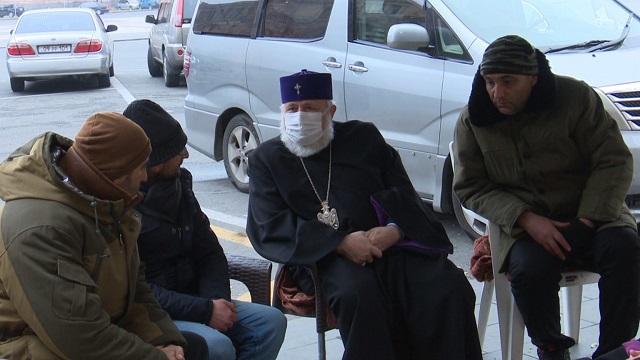
ARF member Gegham Manukyan meets with Catholicos Karekin II, November 30, 2020 (Photo: Gegham Manukyan)
In a series of Facebook posts, the PM alleged that Levon Ter-Petrosyan and Robert Kocharyan attempted to secretly plan a meeting with Russian Foreign Minister Sergey Lavrov during the course of the war. On October 20, PM Pashinyan accepted a proposal to arrange a meeting between the two former Armenian presidents and their Russian counterpart Dmitry Medvedev, yet rejected the idea of sending them to meet the current Russian president as special envoys. He later learned that they had already scheduled a meeting with Lavrov without his knowledge. In response to this assertion, Ter-Petrosyan’s spokesperson Arman Musinyan wrote, “President Levon Ter-Petrosyan considers it pointless to respond to the mental tribulations of this national scourge. Let him do whatever he wants. All the same, he cannot justify himself. The Armenian people will never forgive him.”
Lillian Avedian
Main caption: ARF members march through Yerevan to demand PM Nikol Pashinyan’s resignation, December 2, 2020 (Photo: ARF Youth Union of Armenia)
























